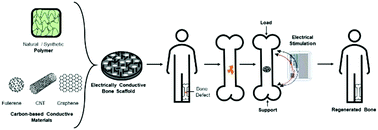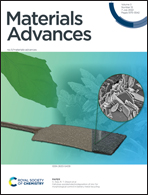Carbon-based electrically conductive materials for bone repair and regeneration
Abstract
Electrically conductive polymers and carbon-based materials are emerging as promising biomaterials for applications in bone tissue engineering solutions. Carbon-based conductive materials may be more suitable alternatives due to their ability to adsorb proteins, act as load-bearing materials, and accelerate bone regeneration and maturation through exogenous electrical stimulation. Furthermore, incorporating carbon-based conductive materials into bone tissue engineering scaffolds better mimics the natural structural and electrically conductive properties of the native bone. This review discusses the in vitro and in vivo performances of one-dimensional and two-dimensional carbon-based conductive materials and their applications as three-dimensional scaffolds for bone tissue engineering. Cellular processing mechanisms of carbon-based conductive materials are summarized to understand better the cellular uptake, degradation, and excretion of these conductive materials if they were to be delivered to the human body to treat bone defects. Both in vitro and in vivo models are discussed to provide insight into the role played by the carbon-based electrically conductive bone scaffold, which may lead to clinical translation.

- This article is part of the themed collections: Recent Review Articles and Popular Advances


 Please wait while we load your content...
Please wait while we load your content...